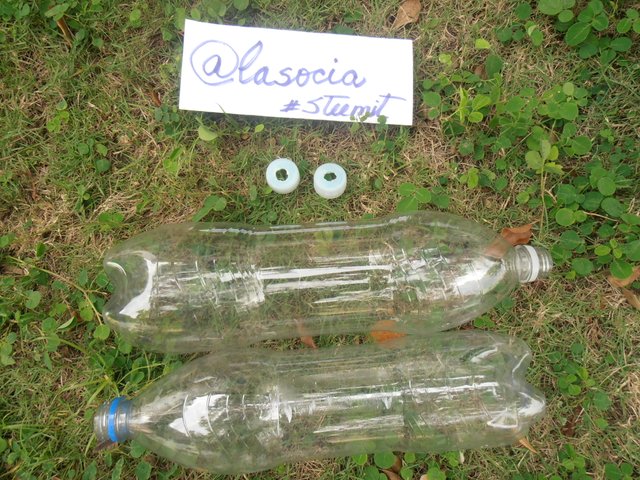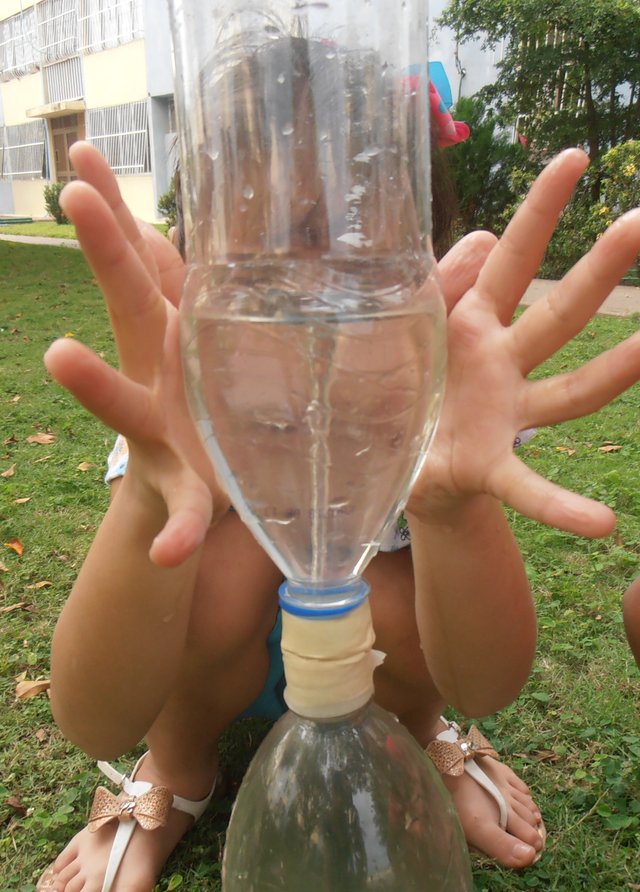Science at home! Fun homemade experiments for the little ones. Let's learn about Air Pressure!
Before starting the experiments it is important to know some terminology that will help the children to understand that we are studying:
What is air pressure? Concept:
The air is composed of different particles and these have a specific mass. The set of all of them is enveloping the Earth, generating a weight on it. When these particles collide on a surface, they generate a force called pressure.
The pressure of the air influences the climate, it will be different for sunny days than for rain, and changes with the passing of the hours. That's why we can wake up with a sunny day and lie down listening to the rain.
There are pressure gauges. In the case of climate, the pressure is measured with a barometer.
Boyle-Mariotte Law of Gases:
This law says that, at constant temperature and for a gas confined in a container, the product of pressure by volume remains unchanged. This means that if the volume were increased, the pressure would decrease proportionally to the increase in volume, and if the volume decreased, a proportional increase in pressure would occur. It can be expressed like this:
P1 • V1 = P2 • V2
Yes now!! Let's go with the experiments:
How to make a tornado with two bottles: air pressure
With this experiment we will not only have fun creating a spectacular tornado of water, but we will take the opportunity to observe and understand how a bottle is emptied. Surely it has something to do with atmospheric pressure!
Materials:
Two large plastic bottles. It will work better if they are rigid like those used in carbonated drinks.
Wide adhesive tape and scissors.
Auger or other tool to pierce the bottle caps.
Water.
A place outside so as not to flood the house if something does not go according to plan.
Process:
- Drill a hole in the center of each plug. The size of the holes will be between 0.5cm and 1cm in diameter.
Put water in one of the bottles until it is almost full.
Never screw the plugs.
Place the empty bottle upside down on the one with water.
Join the mouths of the bottles with several turns of adhesive tape.
- Invert the assembly so that the water is at the top. Observe The water will fall slowly towards the bottle below. In the process, impressive bubbles will form.
Now you're going to create the tornado. Grab the empty bottle (below) with one hand and with the other the bottle with water (above).
Move in circles the upper bottle until the rotation creates a tornado. Observe well. The water will fall very quickly but you will have time to enjoy the show.
It is normal that during its operation there are some water leaks. The adhesive tape is not enough to prevent them from occurring.
What happen?
To understand what happens in this experiment we have to keep in mind the theory of Boyle-Mariotte Law of Gases that explains them at the beginning of the post. So we have to understand How to empty a bottle? For answers, I suggest you do the following experiment: empty a (transparent) bottle of water vertically (let the stream directly down), you will hear a glup glup sound and you will see bubbles in the water; then do the same but placing the bottle in the same way you would place it to fill a glass. This time you will not hear glup glups or see bubbles. Why? It is clear that if there are bubbles in the water it is because air has entered. Here is the key. We already have it! To get water out of the bottle, air must enter its place. In the first case the air passes through the water (hence the glup glups and bubbles) and in the second case the air enters through the hole in the mouth of the bottle.
In our experiments we have dropped water from one bottle to another in two different ways:
Without tornado. As soon as we put the bottle with water upside down, some water falls to the bottle located at the top. Afterwards, the flow of water stops, air enters (we see the bubbles), drops fall again, stops again, more bubbles appear, and so on. To what is due? Let's not forget that we have air in the liquid. Since a little water has come out there is more room for air, so it expands occupying more volume. According to Boyle's law, the increase in volume is accompanied by a proportional decrease in pressure. As the air exerts less pressure on the water, the flow stops. In turn, the bottle air located in the lower part (at higher pressure) passes to the upper bottle in order to equalize pressures. Thanks to the arrival of the air from below, the pressure rises up and the water flows again, giving rise to a new drop in pressure. We start again. The result is that the bottle empties very slowly.
With tornado. When the bottle is rotated strongly, the water moves towards the edges. After several turns a vortex or swirling water appears spirally. As you have noticed, in the center of the whirlpool there is no water, but a channel through which air can freely pass from the bottom bottle allowing the lower and upper pressures to equalize. Now water and air can pass through the holes in the plugs at the same time, and as a consequence, the bottle empties very quickly.



Reference pages:






Woah, I knew how to make a tornado with a bottle of water but not that well. Good experiment. Kudos.
Excellent, this experiment. Congratulations
If you would like to support the educational community by delegating to @steemiteducation, please click on any of the following links. This will ensure that more teachers are supported on a daily basis.
100SP 200SP 300SP 400SP 500SP 750SP 1000SP 2000SP 3000SP 4000SP 5000SP 10,000SP 25,000SP
This post has been voted on by the steemstem curation team and voting trail.
There is more to SteemSTEM than just writing posts, check here for some more tips on being a community member. You can also join our discord here to get to know the rest of the community!
Hi @lasocia!
Your post was upvoted by utopian.io in cooperation with steemstem - supporting knowledge, innovation and technological advancement on the Steem Blockchain.
Contribute to Open Source with utopian.io
Learn how to contribute on our website and join the new open source economy.
Want to chat? Join the Utopian Community on Discord https://discord.gg/h52nFrV
This is very educational and easy to understand about air pressure. Growing up learning science, pressure is one thing I can get confused with. Your explanation makes it easier to understand and yes if the children can do an experiment about it, I'm sure they will remember this for life. Thank you for sharing this, @lasocia!!! :)
This is SO cool! And super creative! Thanks for all the details and video! I bet my son would find this amazing. May need to try this!
What an awesome post! I did this with my children but added some glitter and food coloring to the water. They had fun for hours!! Thanks for sharing!